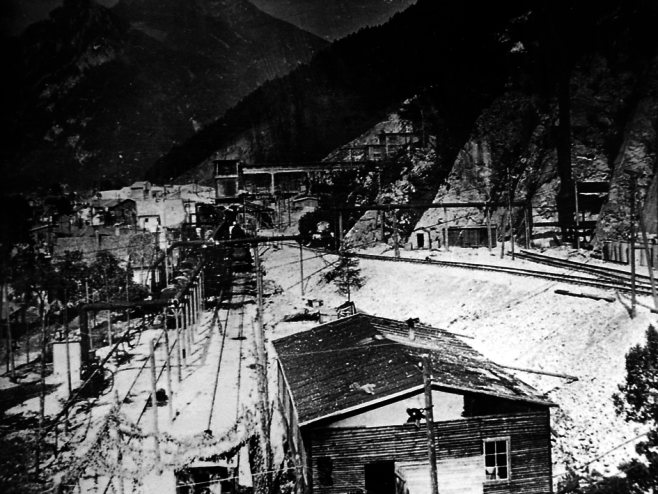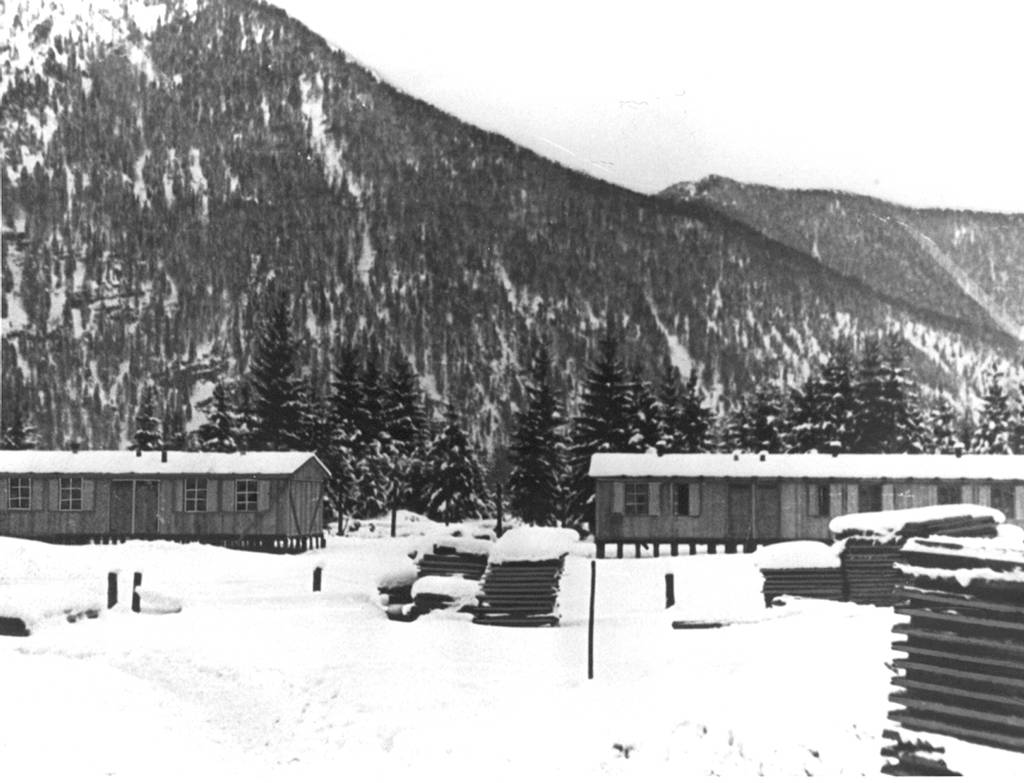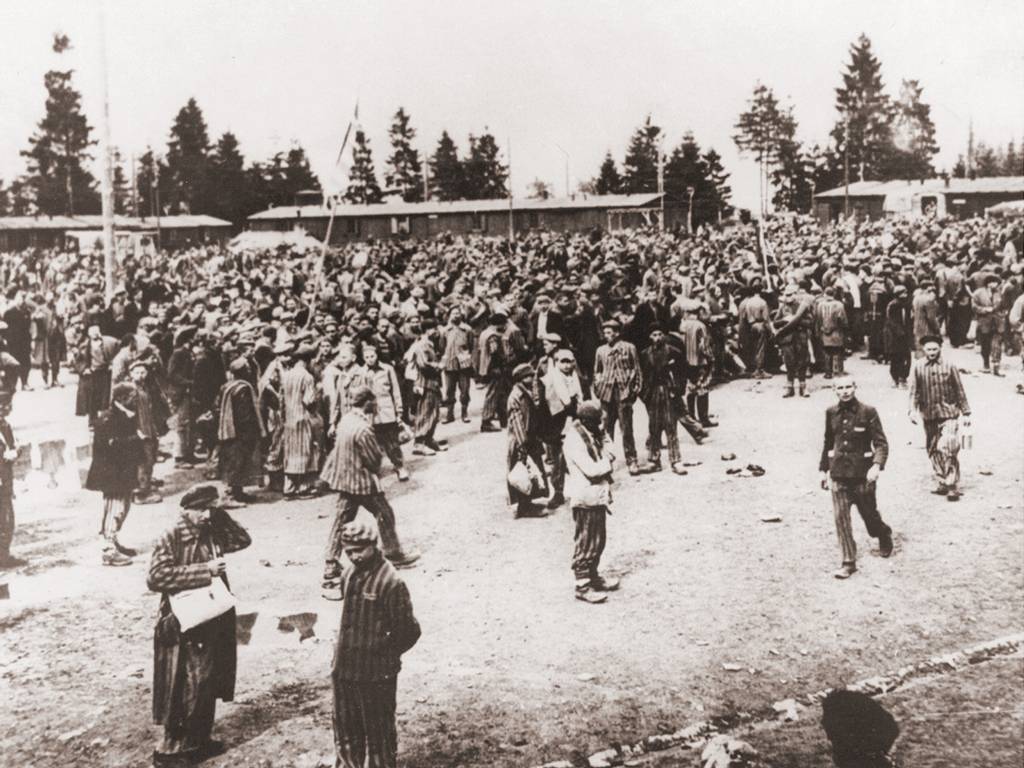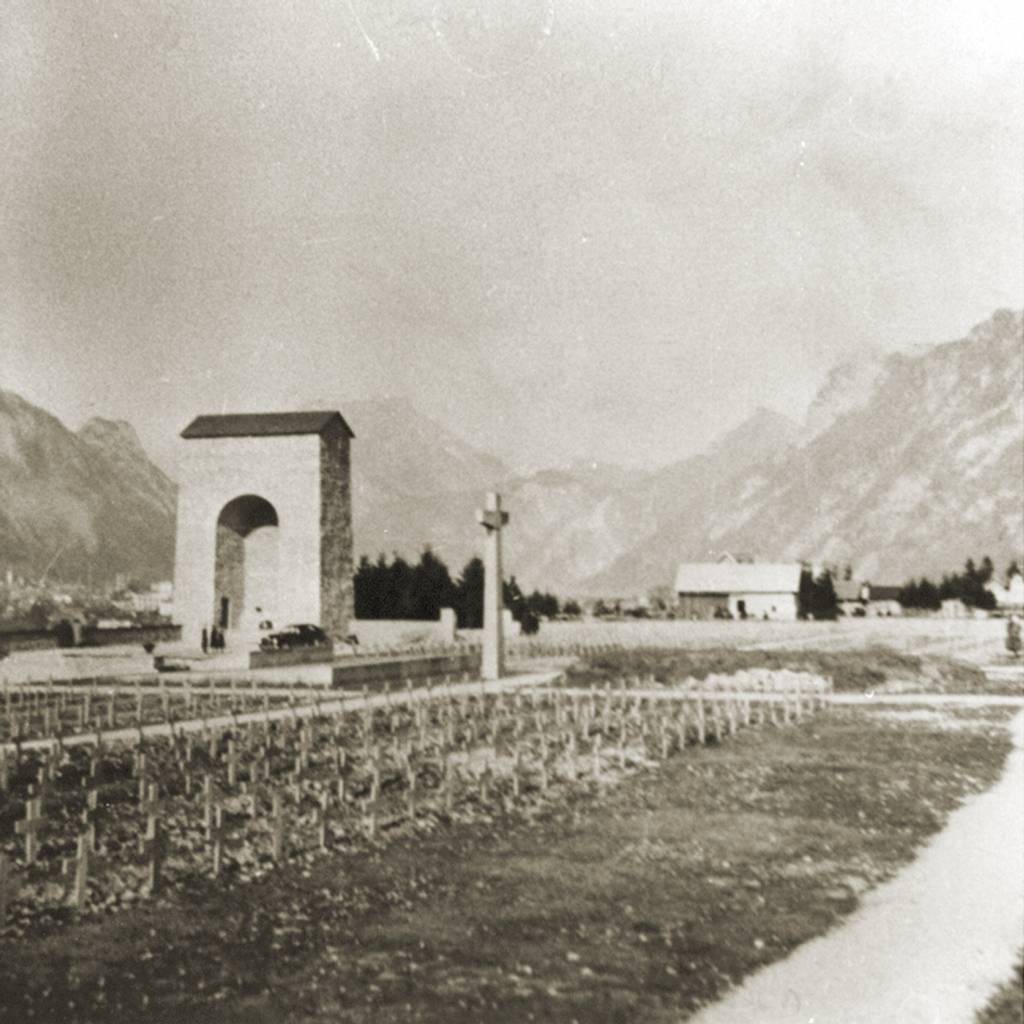Ebensee Memorial
Kirchengasse 5
4802 Ebensee
Tel: +43 6133 5601
E-Mail: museum@utanet.at
Opening times
The barracks of the Concentration Camp Ebensee were destroyed soon after the liberation. Visiting the former area of the camp you can only see the former entrance gate of the camp. The victims‘ cemetery is also located in this area, at the place where one of the mass graves secretly, created by the SS shortly before the liberation of the camp was found. The gallery systems still exist and in one of the huge tunnels a bilingual exhibition (German/English) gives a detailed description of the camp´s history. The remains of a staircase (called ”Löwengang“) can also be visited.
All information regarding the opening times of the Ebensee Memorial can be found at www.memorial-ebensee.at.
The Concentration Camp Ebensee
Duration
18 November 1943 to 6 May 1945
Purpose of Camp / Labour Deployment
In the mountains near Ebensee, a network of tunnels is constructed to provide a site that will be safe from air raids for the rocket research facility run by the Heereswaffenamt (Army Weapons Agency) in Peenemünde in northern Germany. In the end, however, fuel and motor parts are produced in the tunnels for the firm Steyr-Daimler-Puch AG. The concentration camp prisoners have to excavate two tunnel systems in the mountain with a total area of 40,000 square metres. Later they are also used in production.
 The working area outside the tunnels, 22/23 May 1945 (Photograph: Bohuslav Bárta Národní archiv, Prague, KV KSC Praha 1946-1951)
The working area outside the tunnels, 22/23 May 1945 (Photograph: Bohuslav Bárta Národní archiv, Prague, KV KSC Praha 1946-1951)
Prisoners
In total, around 27,000 concentration camp prisoners are sent to the Ebensee subcamp. The majority are from Poland, the Soviet Union and Hungary. Under appalling conditions, the inmates are forced to carry out the back-breaking work of digging tunnels and are mistreated by especially violent guards. After the arrival of large evacuation transports, the already inadequate provision of basic necessities deteriorates still further. Over 8,100 prisoners die in the Ebensee subcamp.
Accomodation
The first prisoners are housed in a former weaving mill at the edge of the town of Ebensee. They have to erect a barrack camp in a wooded area near to the town, to which they are then moved at the end of January 1944. Due to the high number of deaths, construction work on a crematorium for the camp begins in spring 1944.
 Die Errichtung der Häftlingsbaracken in Ebensee, 1943 (SS-Foto, KZ-Gedenkstätte Mauthausen)
Die Errichtung der Häftlingsbaracken in Ebensee, 1943 (SS-Foto, KZ-Gedenkstätte Mauthausen)
Guards
The guard units are mostly made up of members of the Wehrmacht. The heads of camp, SS Hauptsturmführer Georg Bachmayer, SS Hauptsturmführer Alfons Bentele, SS Obersturmführer Otto Riemer and SS Hauptsturmführer Anton Ganz all distinguish themselves through particular severity and brutality.
Disbandment / Evacuation / Liberation
Shortly before liberation, Anton Ganz, the head of camp, plans to kill the prisoners by blowing them up in the tunnels. Inmates prevent this murderous plan from being carried out. The guards flee the advancing US army and hand over command of the camp to the local Volkssturm (home guard). On 6 May 1945, American troops liberate the camp. Hundreds of prisoners still die in the following weeks as a result of concentration camp imprisonment.
 Befreite Häftlinge auf dem Appellplatz in Ebensee, Mai 1945 (Fotograf*in unbekannt, KZ-Gedenkstätte Mauthausen)
Befreite Häftlinge auf dem Appellplatz in Ebensee, Mai 1945 (Fotograf*in unbekannt, KZ-Gedenkstätte Mauthausen)
Memorial / Memorial Site
After the war, a housing estate is built on the site of the former camp; only part of it becomes the concentration camp cemetery. In 1947/1948, the widow of an Italian who died in Ebensee erects a first memorial at a mass grave. A monument bearing the inscription ‘To the eternal dishonour of the German people’ is blown up by the authorities in the 1950s. Since the 1990s, the Verein Widerstandsmuseum Ebensee has been providing information on the history of the camp in one of the tunnels, through exhibitions and, since 2001, in the Ebensee Museum of Contemporary History.
 Der KZ-Friedhof in Ebensee, 1952 (Fotograf unbekannt, KZ-Gedenkstätte Mauthausen)
Der KZ-Friedhof in Ebensee, 1952 (Fotograf unbekannt, KZ-Gedenkstätte Mauthausen)